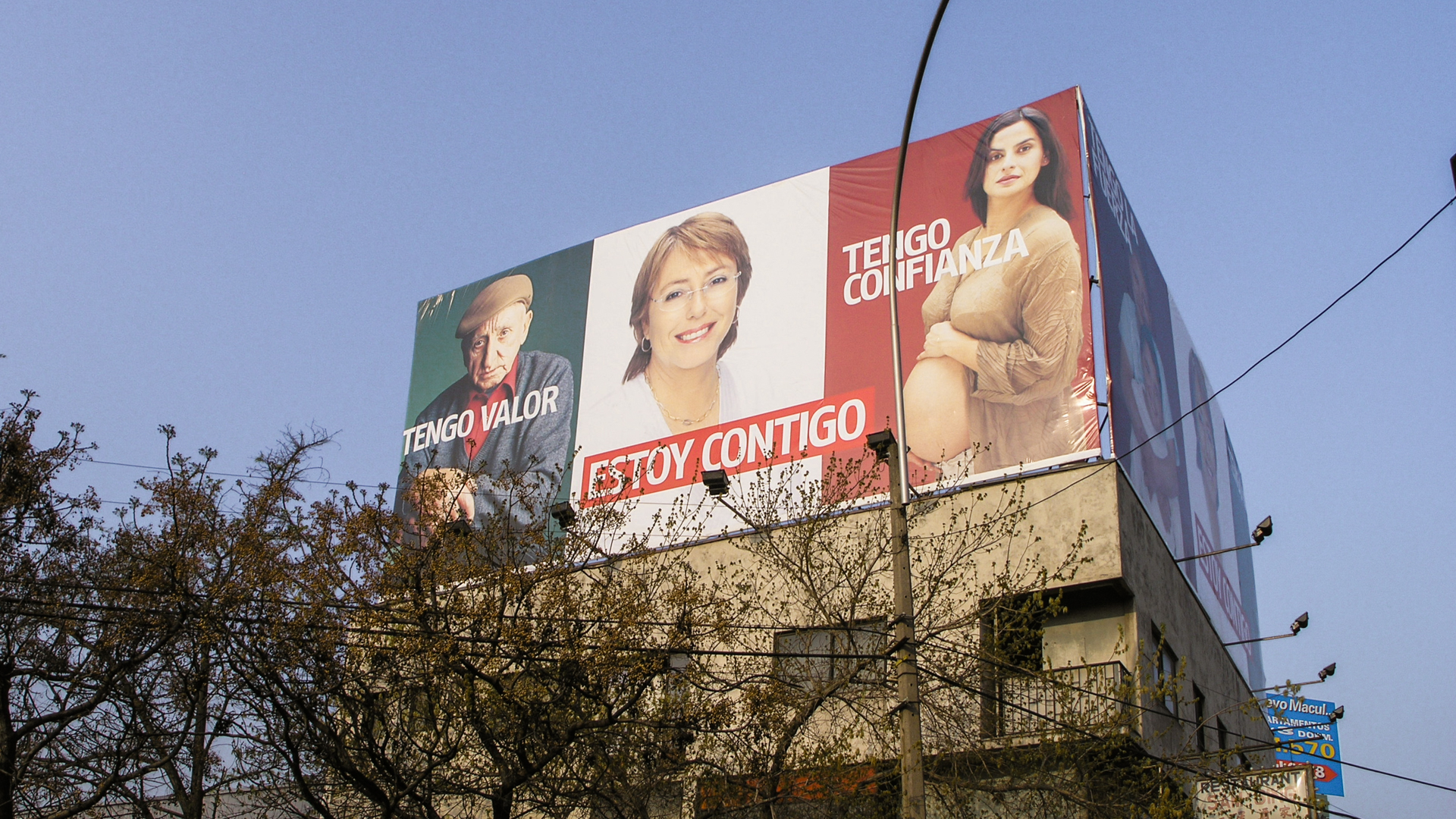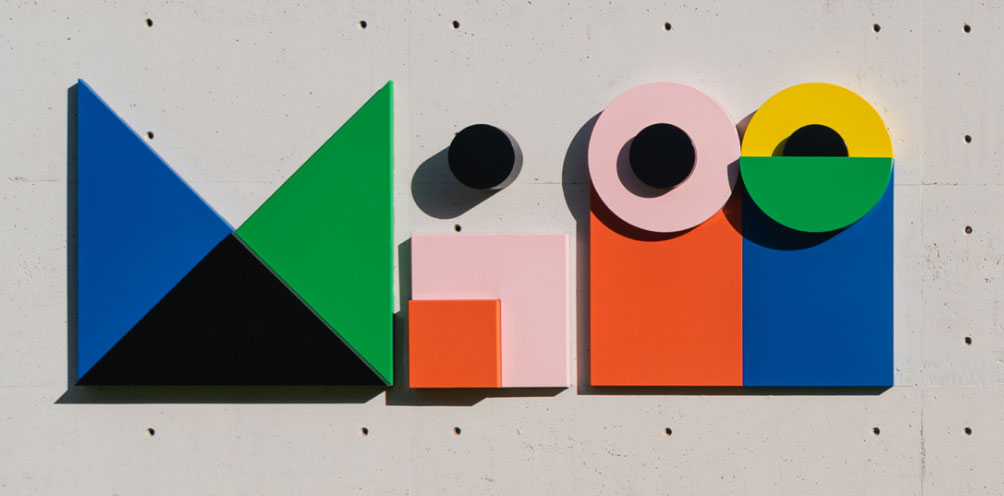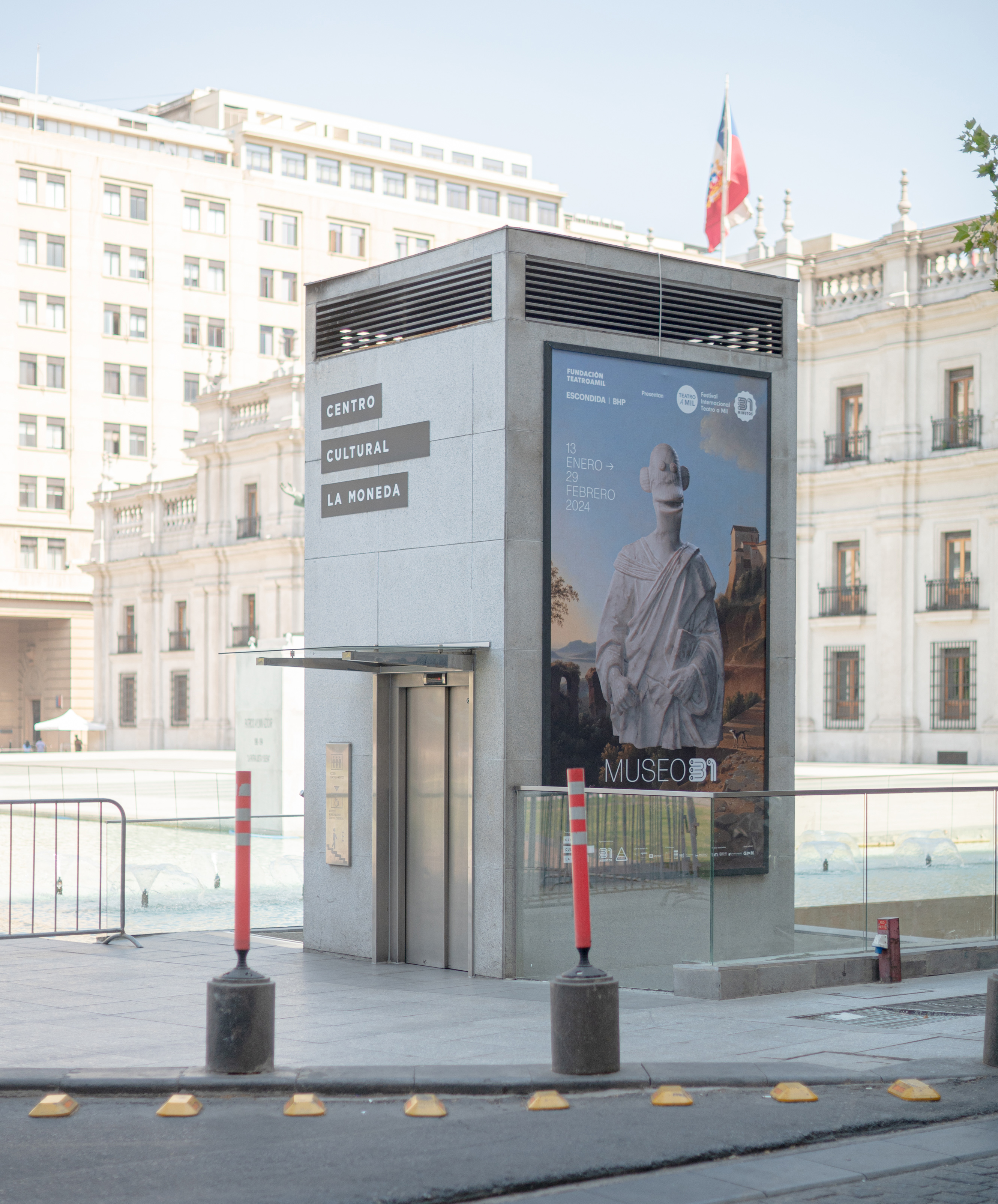Campaña Presidencial Michelle Bachelet
Client
Michelle Bachelet
Services
Art Direction
Campaign
Creative Direction
Graphic Design
Year
2005
Team
Piedad Rivadeneira
Jocelyn Quezada
Colaboradores
Nancy Coste
Alejandro Muñoz
There’s no way to really know what Michelle Bachelet was thinking on the evening after her landslide victory in Chile’s presidential election, as she stood before thousands and thousands of jubilant supporters as the leader in pectore of the country. Chances are that the then-54-year old pediatrician thought of her father, a former general persecuted and tortured by Chilean dictator Pinochet, or her mother, with whom she was detained for political reasons and exiled to Australia and East Germany. Maybe she was thinking if they would ever believe that their daughter was about to turn into a guiding light not just for Chile but for the whole of South America. Yes, she was the first woman ever to hold presidential office in Chile – but it’s not just that: to many, her election represented a chance for the country to reconcile with its past, a desire for a greater involvement with the historically marginalized categories in national politics such as women, the working class, and young people, a commitment to a new style of government, with more dialogue and participation and, above all, closer to its own citizens.
What we do know is what the future president of Chile was thinking several months before that day, the morning when she entered Felicidad’s office at 8am to meet the young and stubborn art director of her campaign who, despite being initially in charge exclusively of the graphics and the visuals, felt like she had to say what she wanted to say. Unsatisfied by the concepts, slogans and the overall messaging provided by the official campaign committee for her to lay out, Piedad Rivadeneira had started coming out with new ideas, concepts, and messages. When asked by the committee, she showed them what she had been working on. They were not convinced. “The president is coming tomorrow to your office and, if she says so, this is the campaign”. It was a lapse of pure joy – only interrupted by the sudden realization that her office kind of lacked the basics, such as tables, chairs, coffee and so on. When Michelle Bachelet arrived, leaning on Felicidad’s brand new meeting table and sipping the first coffee ever brewed by the recently bought French press, she loved the campaign. “Approved”. Yes, that’s what really happened. From being in charge of one design alone, Felicidad took over and developed the general concept and messaging of the whole campaign, which would then be spread across all channels, from posters to folletos, from radios to television.
The world was a different place back then. In a country with gender roles inextricably tied to the patriarchal template from centuries ago, the idea that women would come to be protagonists of public life, from political parties to social movements, was still science fiction. And even though the image of the lone omniscient leader was slowly crumbling, the gobiernos ciudadanos (a government with more dialogue, participation, where people are at the center instead of one political figure) still felt a bit more than a mirage. Bachelet threatened to dismantle that world. She was perceived as a symbol of political, economic, and social change. And, if you know us a bit, we liked that.
Our proposal was not chosen by Bachelet for its highly sophisticated political strategy, its campaign message wording or its provocative visual concept. Instead, the winning approach came by simply translating, into the language of a campaign, an unprecedented political stance by an unprecedented candidate who, opposing a billionaire politician, stood for the under-represented common citizen. If the messaging was really about the citizens, we had to make it very clear: our creative direction needed to start without the name of the candidate. For the first leg of the campaign, Bachelet’s candidacy was announced by pictures of common citizens as the real protagonists of the movement. In line with the slogan ‘Estoy Contigo’ every picture always portrayed her along with a fellow citizen: a doctor, a construction worker, a teacher, a mother of three children. The slogan would then work both ways – from Bachelet to the people and from the people to Bachelet. We went all the way: no empty slogans, no populist proposals, no candidate picture smiling at the camera on a solid color background and some “Vote” lettering on it – only a normal woman interacting with her fellow citizens. This was in the year 2005, and the imagery we currently see on social media on a daily basis wasn’t imaginable in our wildest dreams.
The message was launched. It was a campaign like no other. The following phases followed our same concept: an epic of ordinary life against the shiny suits and the fake smiles, a bottom-up messaging that involved all citizens against the rhetoric of the lone male savior, a grassroots initiative that got citizens to print posters, hang flags, and spread the word in every possible way. We had ambassadors at every corner: neighborhood associations, schools, comunas, gyms. We distributed thousands and thousands of flyers at a time, with all the materials for it to spread. It wasn’t always smooth: we were up against billions of dollars, a candidate who once owned 90% of the country’s mainstream television network, and a centuries-old tradition of political messaging that had yet to be broken.
It was sweat, blood and tears – but we won. Yes we won, because we believed in our vision and committed to it., Looking backwards, it embodies our work ethos: a commission that aims to blur the lines between design, images and words, at the service of a progressive cause and and positive force, with an immense reach in terms of audience and a huge responsibility for a given society. It’s not about the creative result per se, but instead about what you can achieve with creativity. With our contribution we helped Bachelet and her people obtain power in one of the most successful and stable economies in Latin America, reform the country’s politics, foster a change for the many and eventually change the perception of what a politician could and should be.



